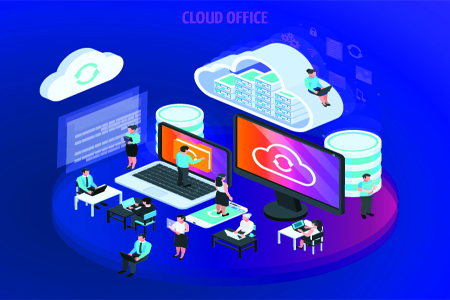
Infrastructure as a service (IaaS)
At Upsilon "Infrastructure as a service" (IaaS) refers to online services that provide high-level APIs used to abstract various low-level details of underlying physical network infrastructure which include resources, location, data partitioning, scaling, security, backup, etc.
Upsilon Creates hypervisor, also known as a virtual machine monitor or VMM runs the virtual machines as guests. Pools of hypervisors within the cloud operational system always support more than a large numbers of virtual machines and it has ability to scale services up and down according to customers' requirements.
We, work on Linux which containers run in isolated partitions of a single Linux kernel running directly on the physical hardware. Linux groups and namespaces are the underlying Linux kernel technologies used to isolate, secure and manage the containers.
Upsilon containerization offers higher performance than virtualization because there is no hypervisor overhead. IaaS clouds often offer additional resources such as a virtual-machine disk-image library, raw block storage, file or object storage, firewalls, load balancers, IP addresses, virtual local area networks (VLANs), and software bundles.
Our IaaS services describes: "where the consumer is able to deploy and run arbitrary software, which can include operating systems and applications. Customer does not manage or control the underlying cloud infrastructure but has control over operating systems, storage, and deployed applications; and possibly limited control of select networking components, host firewalls.
Upsilon IaaS Cloud provides resources on-demand from our large pools of equipment installed in data centers. For wide-area connectivity, our customers use either the Internet or carrier clouds which has dedicated virtual private networks.
To deploy our customer applications, cloud users install operating-system images and their application software on the cloud infrastructure. IaaS model, the cloud user patches and maintains the operating systems and the application software. IaaS cloud provides typically bill on IaaS services on a utility computing basis, cost reflects the number of resources allocated and consumed.
Platform as a service (PaaS)
Upsilon PaaS provides to the customer to deploy onto the cloud infrastructure consumer created or acquired applications created using programming languages, libraries, services, and tools supported.
With our PaaS, customer does not manage or control the underlying cloud infrastructure including network, servers, operating systems, or storage, but has control over the deployed applications and possibly configuration settings for the application-hosting environment.
Our PaaS offer a development environment to application developers where they would develop toolkit and standards for development and channels for distribution and payment.
In the PaaS models we provide a computing platform, typically including an operating system, programming-language execution environment, database, and the web server. With our PaaS, the underlying computer and storage resources scale automatically to match application demand so that the cloud user does not have to allocate resources manually.
We do have various types of PaaS include iPaaS - Integration Platform as a Service enables customers to develop, execute and govern integration flows. iPaaS integration model customers drive the development and deployment of integrations without installing or managing any hardware or middleware.
Whereas our dPaaS specialized on integration and data management products as a fully managed service. Under the dPaaS model, the PaaS provider, not the customer, manages the development and execution of programs by building data applications for the customer. dPaaS users access data through data-visualization tools


Software as a Service (SaaS)
Upsilon SaaS provides, customer to use the provider's applications running on a cloud infrastructure where it could have accessible from various client devices through - Web Browser (e.g., web-based email), or a program interface.
Customer does not manage or control the underlying cloud infrastructure including network, servers, operating systems, storage, or even individual application capabilities, with the possible exception of limited user-specific application configuration settings.
In the software as a service (SaaS), users gain access to application software and databases where we manage the infrastructure and platforms that run the applications and operate application software in the cloud and cloud users access the software from cloud clients. Cloud users do not manage the cloud infrastructure and platform where the application runs. This is how we eliminate the need to install and run the application on the cloud user's own computers, which simplifies maintenance and support.
Our SaaS is always knowns as: "on-demand software" and is usually priced on a pay-per-use basis or using a subscription fee.
Mobile "Backend" as a service (MBaaS)
Our MBaas- Mobile "backend" as a service (m) model, also known as "backend as a service" (BaaS). Our MBaas Services way to link user and their applications to cloud storage and cloud computing services with programming interfaces exposer to end user applications and custom software development kits (SDKs).
Upsilon MBaaS services include - user management, push notifications, integration with social networking services and many more.







